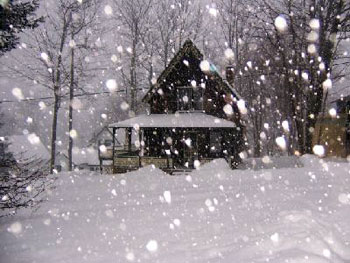 If you’re a mom or dad, you know how hectic it can get around the holidays. You wish there were more hours in a day, your mood is less than jovial and your toddler can feel it. But you don’t want him to get lost in the shuffle; he just wants to be a part of the planning, baking and all the wonderful festivities. Make time for the two of you. Not only is it fun, but a great way to calm down and enjoy the moment.
If you’re a mom or dad, you know how hectic it can get around the holidays. You wish there were more hours in a day, your mood is less than jovial and your toddler can feel it. But you don’t want him to get lost in the shuffle; he just wants to be a part of the planning, baking and all the wonderful festivities. Make time for the two of you. Not only is it fun, but a great way to calm down and enjoy the moment.
Here are some fun and easy holiday activities and recipes for you and your toddler to do together:
- Before the holiday begins, go to the library and pick up a few age appropriate holiday books and spend time reading with your child.
- Play holiday music in your home or car. The tunes are catchy and toddlers love to sing along.
- Buy him a holiday activity book. Put on holiday music and ask him to make some special pictures. Then decorate your home with his beautiful pictures!

 'Tis the season of spreading good cheer and spreading waistlines. We have all heard it before – the average person gains one pound a year during the holidays. That is, except for French women, who apparently don't gain weight, ever.
'Tis the season of spreading good cheer and spreading waistlines. We have all heard it before – the average person gains one pound a year during the holidays. That is, except for French women, who apparently don't gain weight, ever. Everyone I know espouses the virtue of a homemade Christmas, and I
have to admit that when someone takes the time to make me something I
am genuinely touched by the act and the sentiment that goes along with
it. That said, have you ever decided to take on a project that grew so
far beyond its original scale and intent that you regretted it? As my
family and friends can attest to, I am famous for that kind of thing.
But something about the holidays seems to blindly motivate me toward
this type of endeavor year after year.
Everyone I know espouses the virtue of a homemade Christmas, and I
have to admit that when someone takes the time to make me something I
am genuinely touched by the act and the sentiment that goes along with
it. That said, have you ever decided to take on a project that grew so
far beyond its original scale and intent that you regretted it? As my
family and friends can attest to, I am famous for that kind of thing.
But something about the holidays seems to blindly motivate me toward
this type of endeavor year after year.
 Here in Maine we await a "super storm" that is huge and rushing across the United States, or so they say. Six to twelve inches of snow, turning to freezing rain with high winds. Sounds like Winter weather in Maine, not too unusual. It isn't the size of the storm it's what you find to make it fun that counts and I have a plan to enjoy it! In between plowing I will be making our Mother's tortiere pies and perhaps having a slice for lunch and another with a pot of hot tea in the afternoon to warm up.
Here in Maine we await a "super storm" that is huge and rushing across the United States, or so they say. Six to twelve inches of snow, turning to freezing rain with high winds. Sounds like Winter weather in Maine, not too unusual. It isn't the size of the storm it's what you find to make it fun that counts and I have a plan to enjoy it! In between plowing I will be making our Mother's tortiere pies and perhaps having a slice for lunch and another with a pot of hot tea in the afternoon to warm up.
